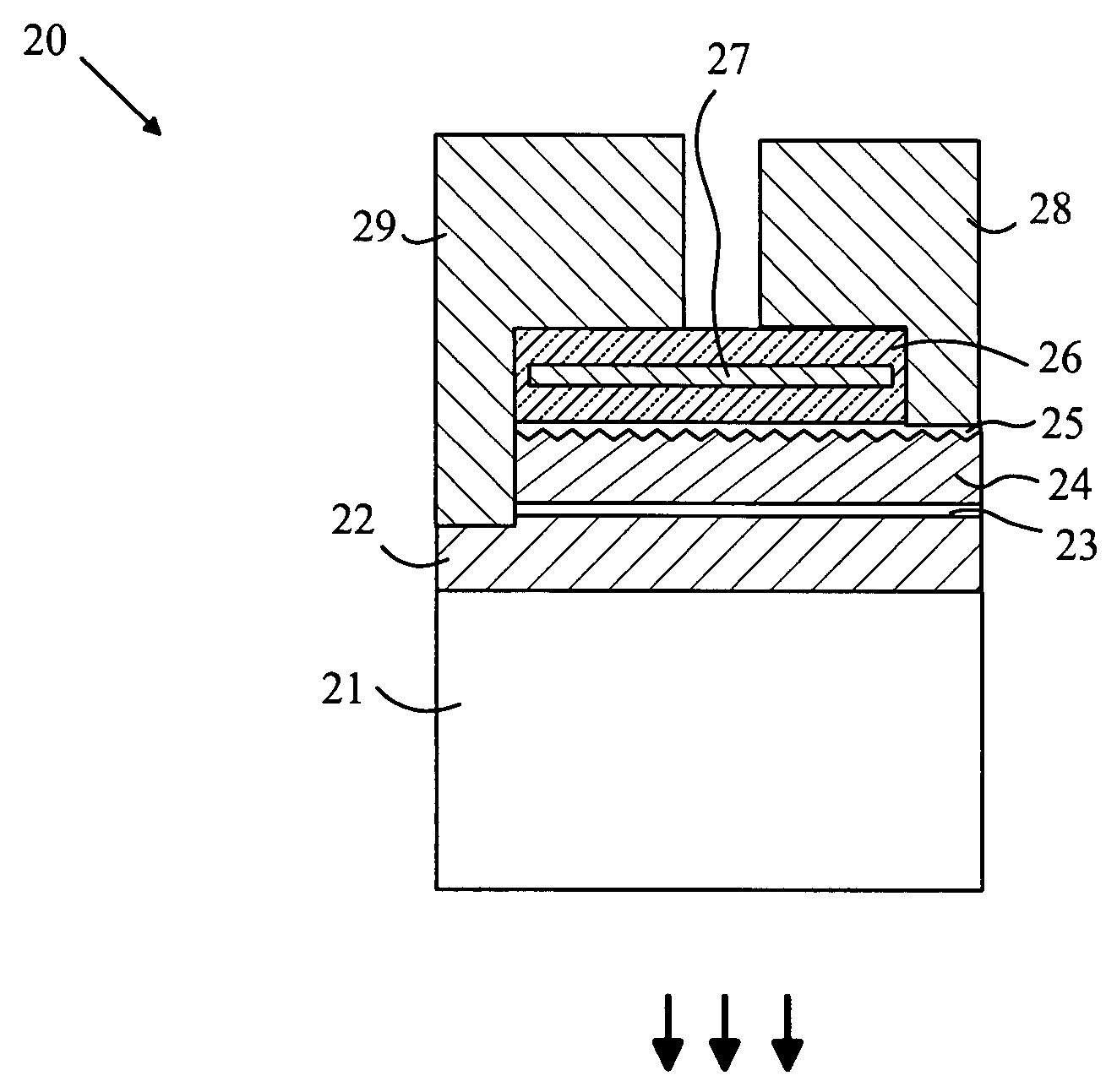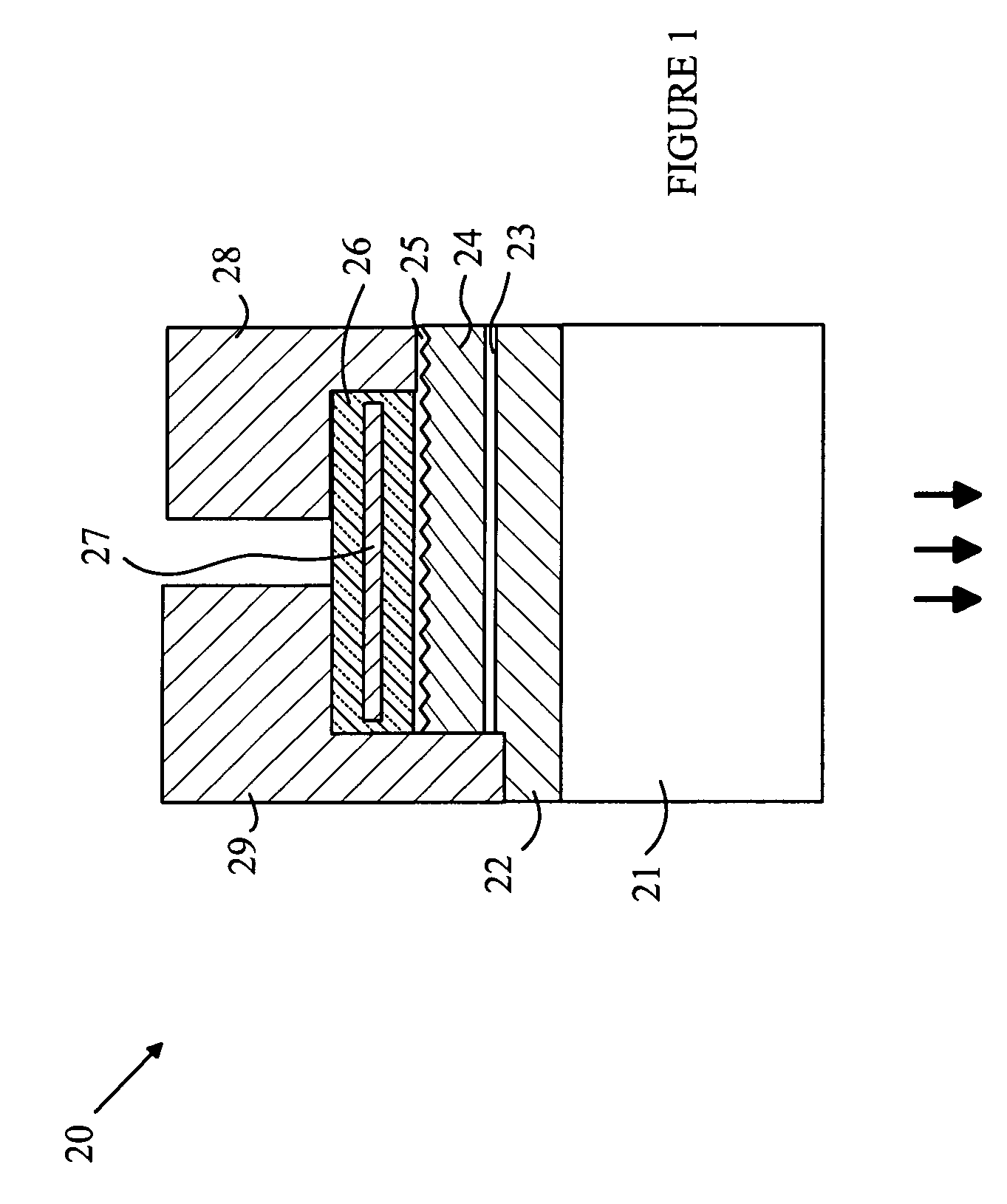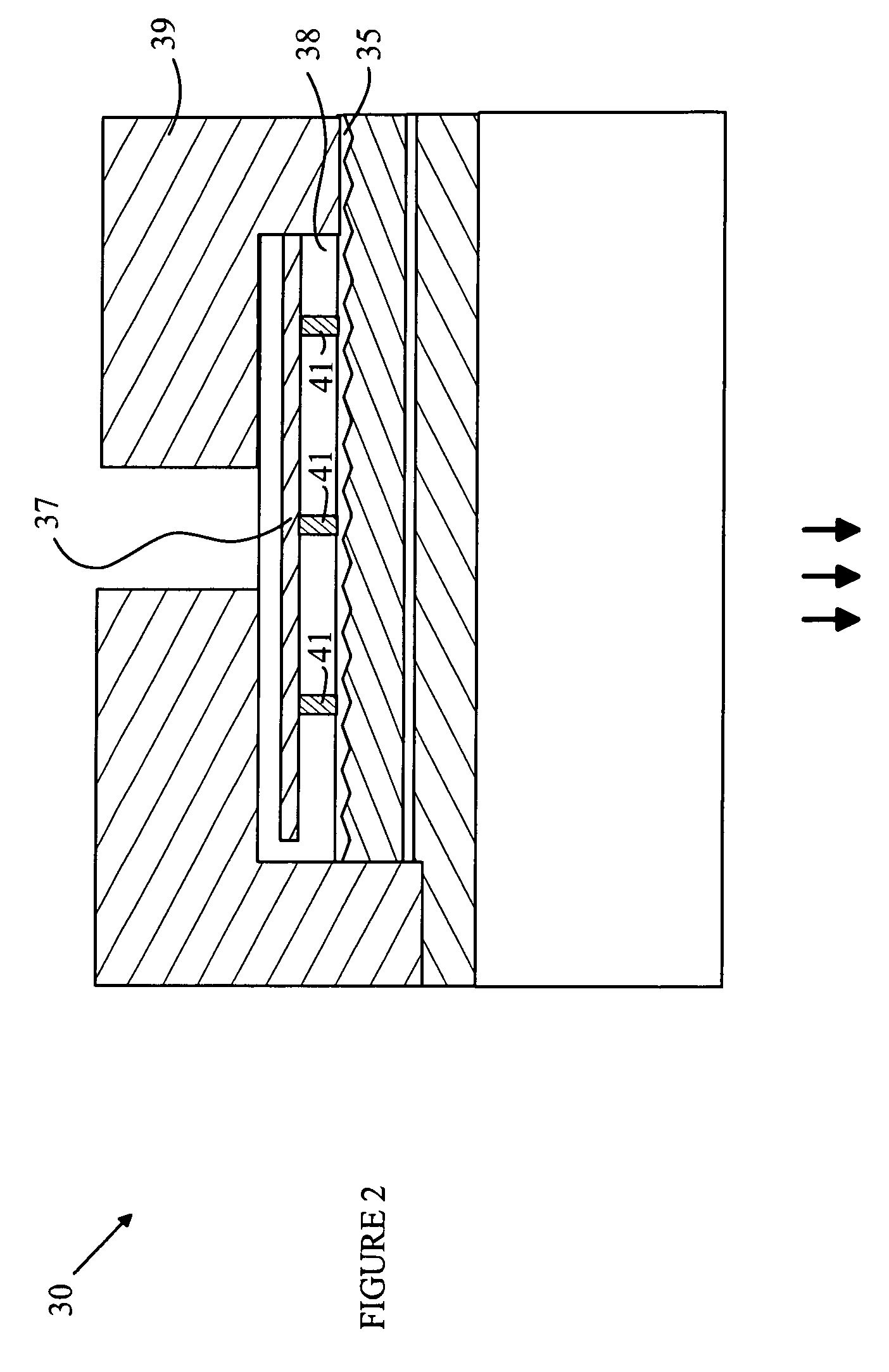LED Structure
a technology of led structure and led die, which is applied in the direction of semiconductor/solid-state device manufacturing, electrical equipment, semiconductor devices, etc., can solve the problems of increasing the cost of an led, and reducing the cost of a single led
- Summary
- Abstract
- Description
- Claims
- Application Information
AI Technical Summary
Benefits of technology
Problems solved by technology
Method used
Image
Examples
Embodiment Construction
[0020]The manner in which the present invention provides its advantages can be more easily understood with reference to FIG. 1, which is cross-sectional view of an LED according to one embodiment of the present invention. LED 20 is constructed on a sapphire substrate 21 by epitaxially growing a number of layers of GaN family materials. To simplify the following discussion, the layers may be grouped into three layers. An n-type layer 22, an active layer 23, and a p-type layer 24. It is to be understood, however, that each of these layers may include a number of sub-layers that vary in composition with respect to one another. In addition, it should be noted that the layers are not drawn to scale.
[0021]Active layer 23 generates light when holes and electrons from the adjacent layers combine therein. Active layer 23 can be constructed from multiple InGaN layers separated by GaN layers. The precise details of the active region are known to the art, and hence, will not be discussed in det...
PUM
 Login to View More
Login to View More Abstract
Description
Claims
Application Information
 Login to View More
Login to View More - R&D
- Intellectual Property
- Life Sciences
- Materials
- Tech Scout
- Unparalleled Data Quality
- Higher Quality Content
- 60% Fewer Hallucinations
Browse by: Latest US Patents, China's latest patents, Technical Efficacy Thesaurus, Application Domain, Technology Topic, Popular Technical Reports.
© 2025 PatSnap. All rights reserved.Legal|Privacy policy|Modern Slavery Act Transparency Statement|Sitemap|About US| Contact US: help@patsnap.com



